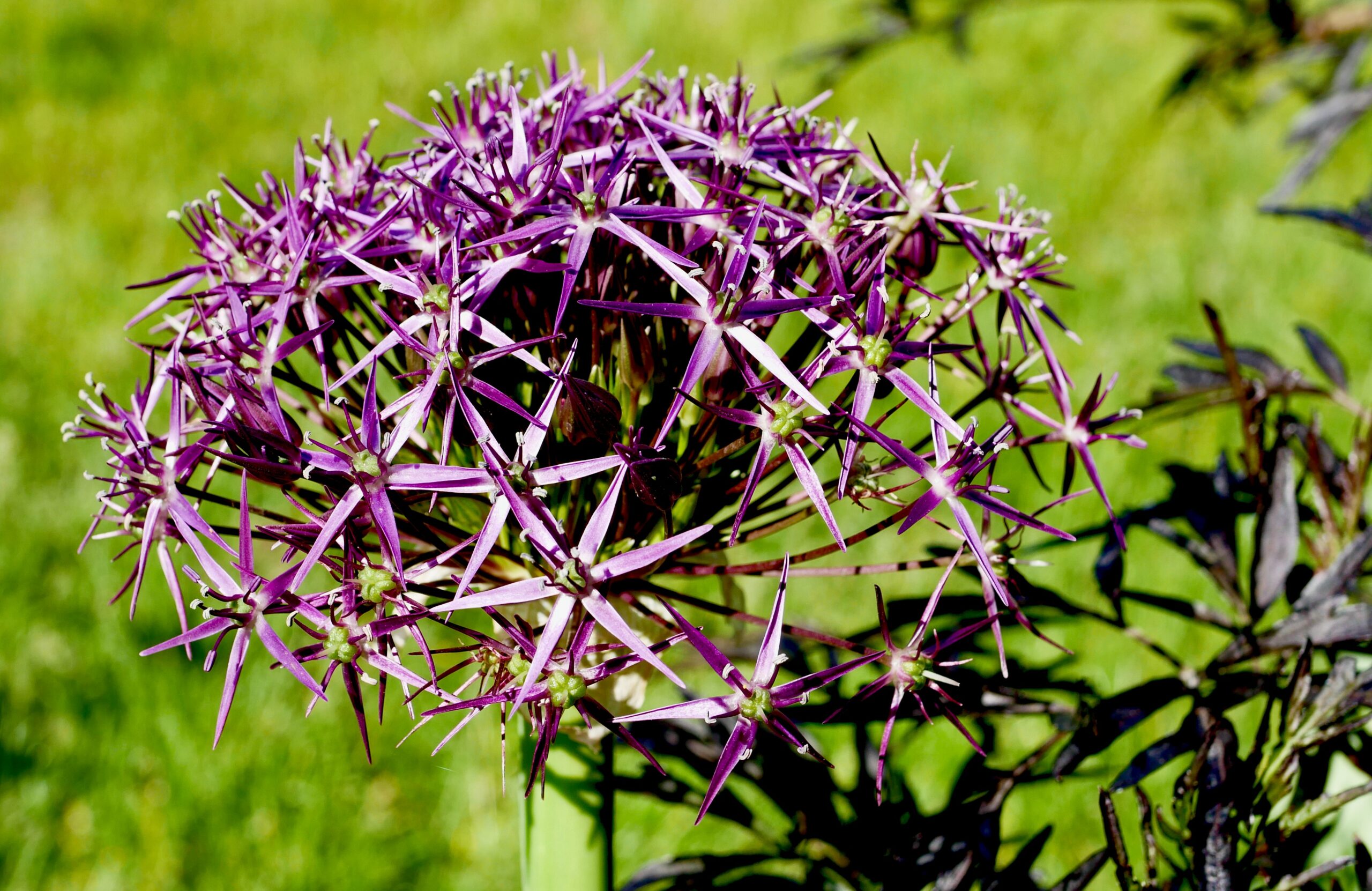By David P. Davis
Newsroom@DominionPost.com
I am so glad to be past our official last-frost date with a solid 10-day forecast of warmer weather. At the West Virginia Botanic Garden, that means the blooms that are developing will not get frost damage, and we can go ahead and start planting annuals. Phew!
It also means that some of our warmer spring flowers are coming into their blooming periods, including both our allium and iris collections.
Allium is related to onion and garlic (family Amaryllidaceae), and thus shares their strong flavors, which are imparted by sulfides. This strong flavor provides deer tolerance, making them a great choice where deer are a concern. Allium loves sunny locations and is best placed behind other perennials to hide spent foliage later in the season. Also, many varieties can be very tall, as high as four or five feet, making them a great addition to a deeper bed. At the WVBG, you can find allium in the Yagle Garden and the Butterfly Garden.

The allium Globemaster is now blooming, with heads six to eight inches wide on stalks three to four feet tall. These large blooms are really a collection of numerous small, purple and green flowers arising from a common point, somewhat like an umbrella (known by the botanical term “umbel”). Another allium in bloom is the Star of Persia allium (Allium cristophii). This allium is worth a trip to the WVBG to see it for yourself. Its extremely large blooms, up to 10 inches wide, perch on stalks of about two feet. The purple and green umbels are airier and spread wide with spiky tepals making them rather unworldly.
Iris flowers are also coming into bloom at the WVBG, and we have a selection of bearded, flag and Siberian irises. Iris is a genus of almost 300 species of flowering plants with showy flowers.
Irises are perennials with either creeping rhizomes or bulbs. Irises with rhizomes usually have 3-10 sword-shaped leaves and grow in dense clumps. In bloom in the Yagle Garden is a large yellow-and-white bearded iris with a deep yellow beard.
Also coming into bloom in the Yagle Garden are lovely violet-blue Siberian irises (Iris sibirica) that form a ring around the upper end of the bed and are planted throughout.
Lastly, we have the yellow flag iris (Iris pseudacorus) along the walkway near the guest kiosk in the Butterfly Garden and in the lower Yagle Garden. In each case, these irises are forming large clumps with many blooms that will provide a great botanical show during the next few weeks.
Come and see it all at the WVBG and become a member at WVBG.org.
David P. Davis, Ph.D., gardener at the WVBG. For visiting information, maps, and more, visit WVBG.org.







